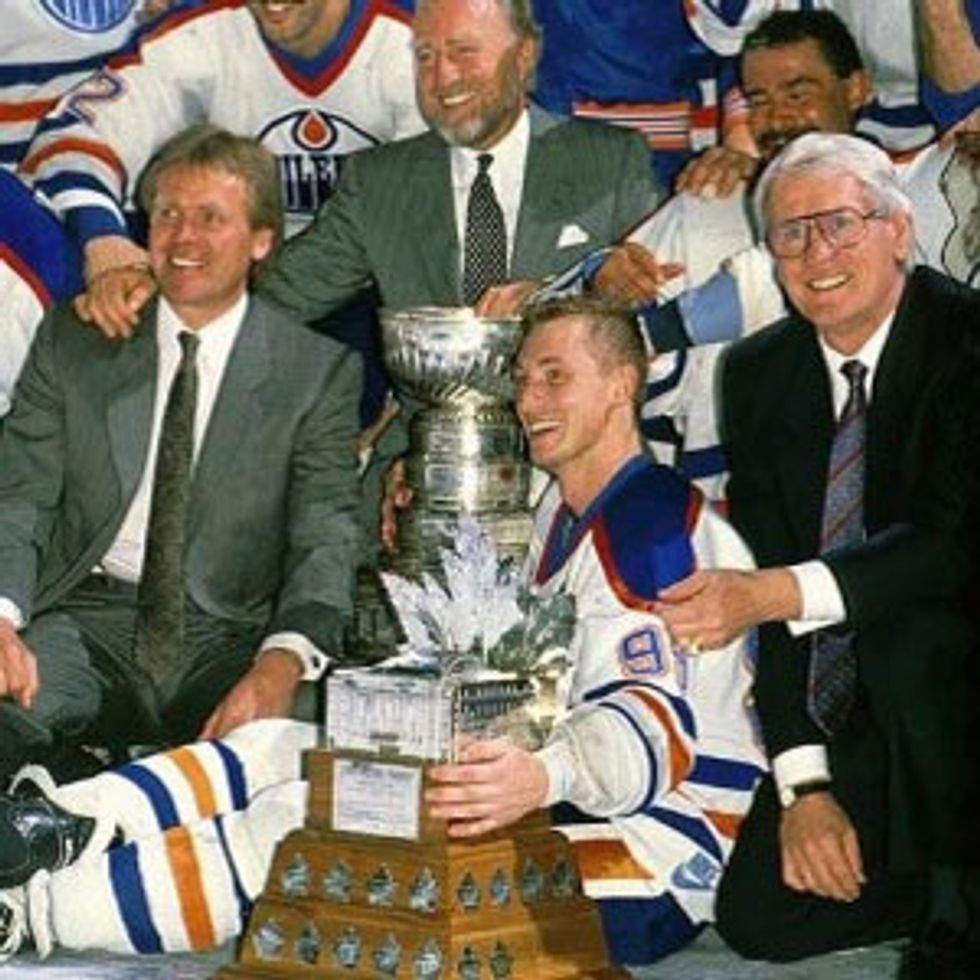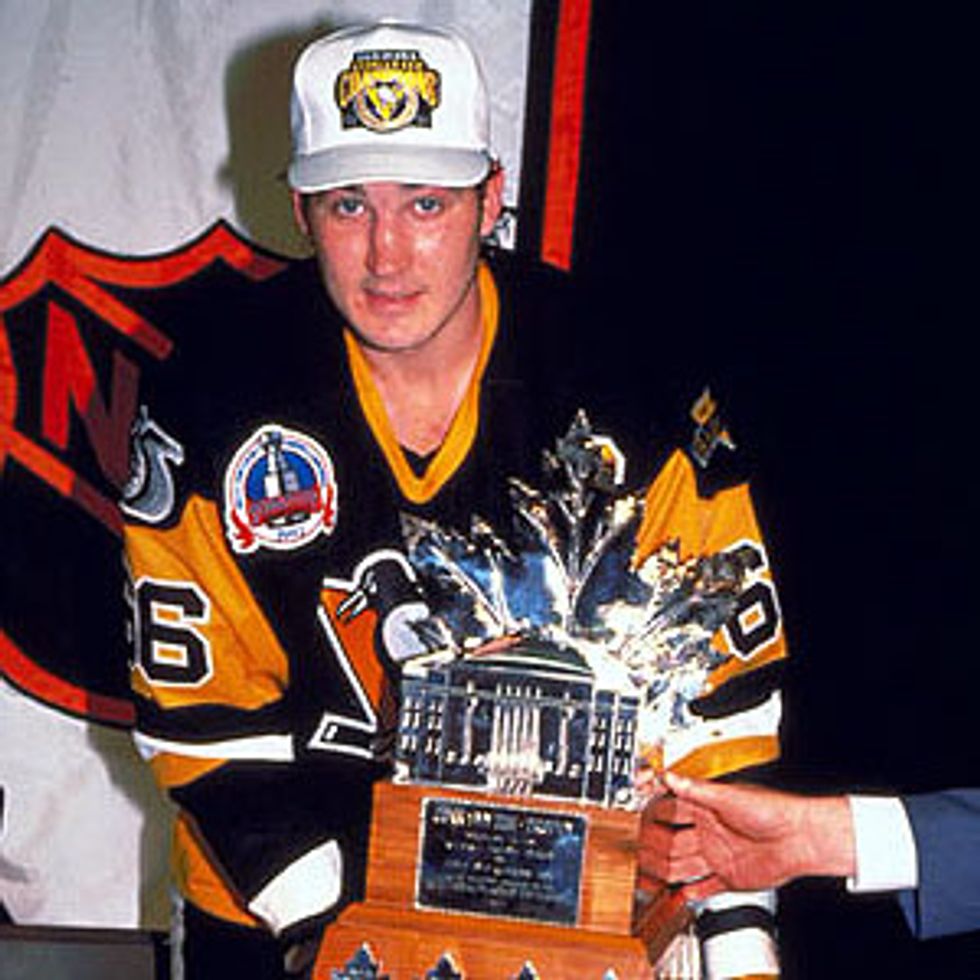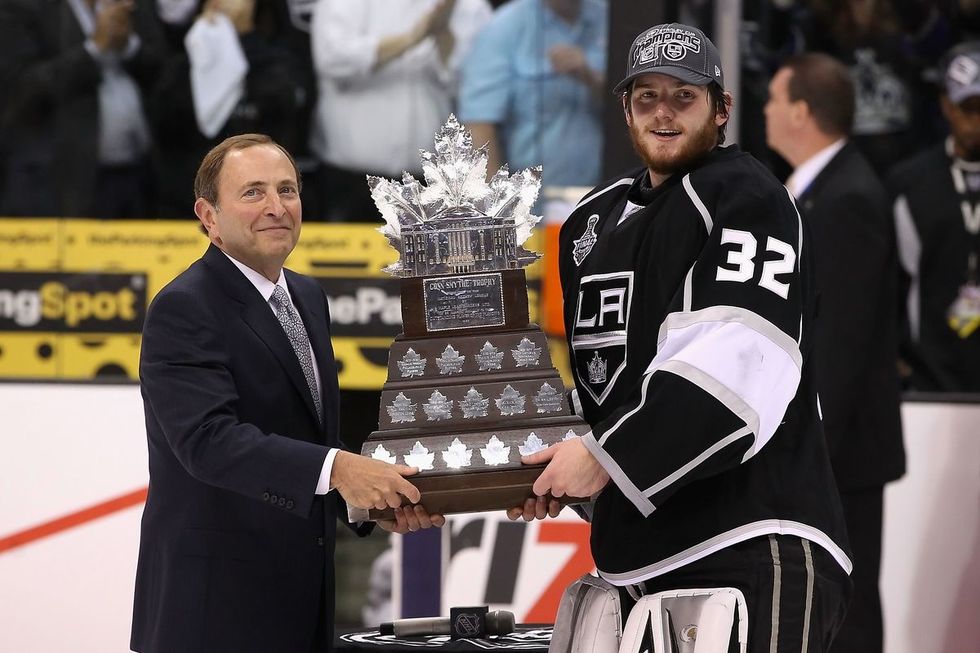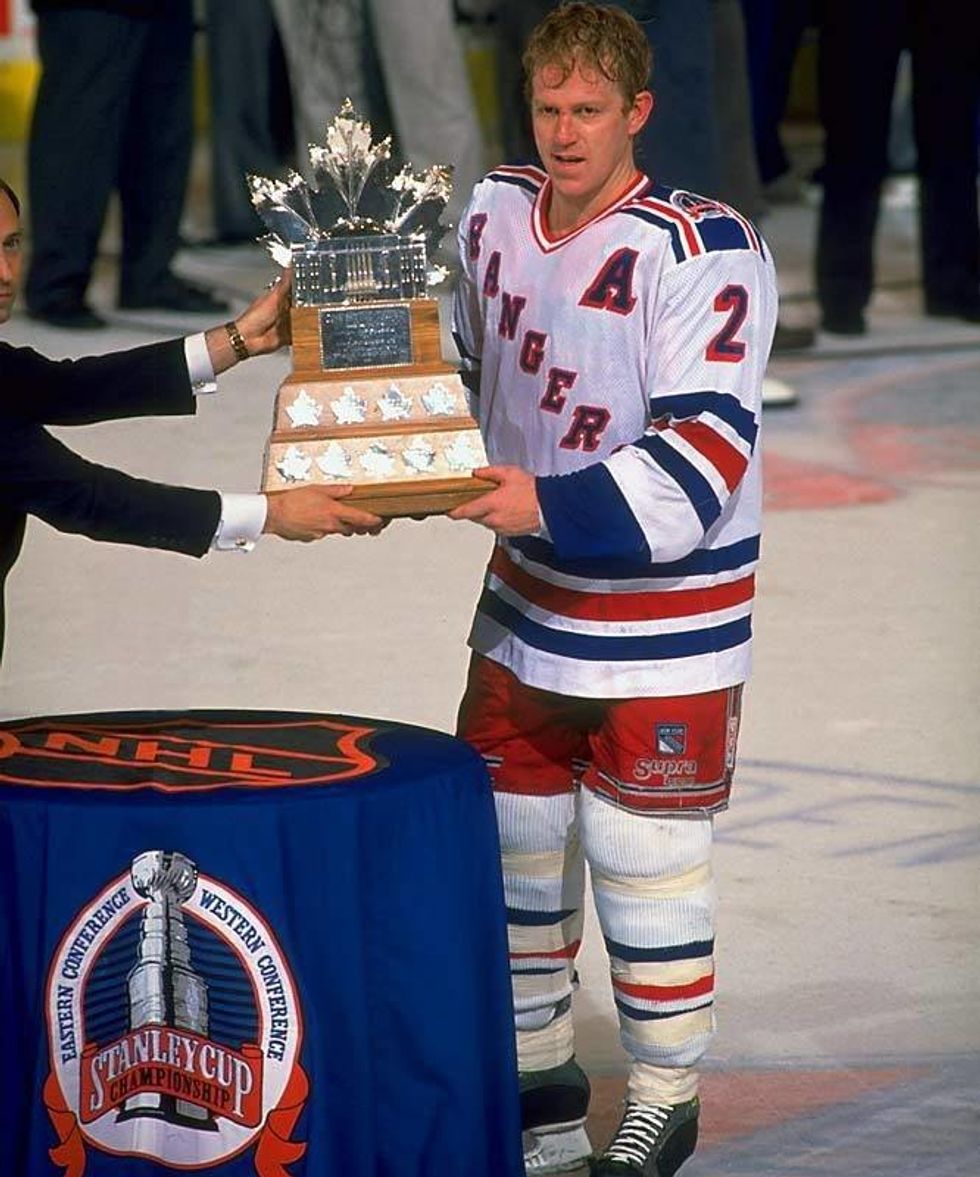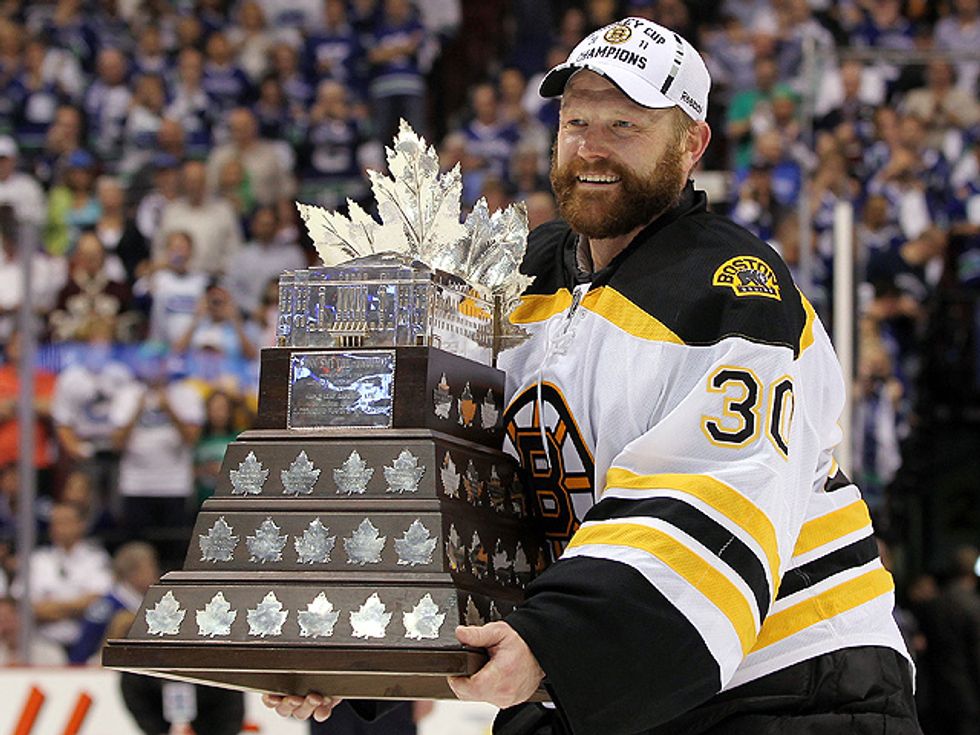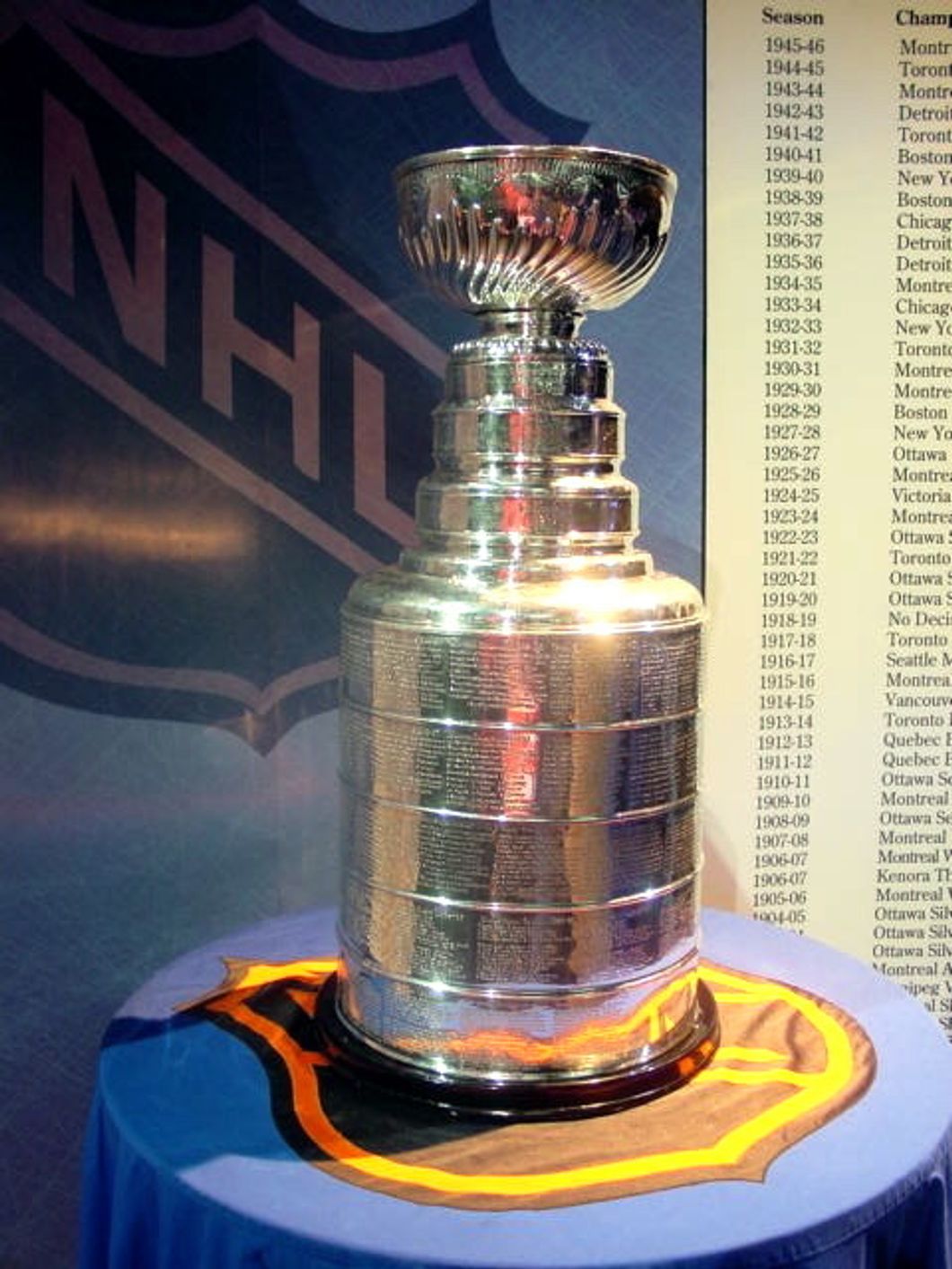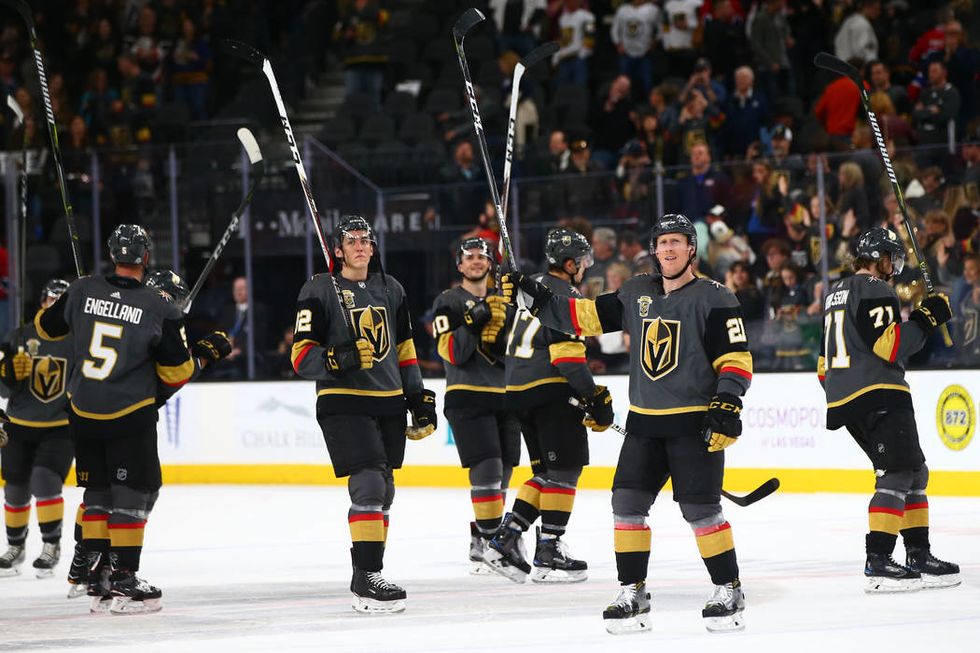13 Things You May Or May Not Know About The Stanley Cup
Seriously some of the wildest things you likely never knew about this prestigious, giant cup.
For starters, all hockey fans can agree that our sport is totally underrated. It's only now getting trendy here and there but it's so under-appreciated. Sucks for the non-believers because when it comes to post-season play, it's amazing. When it comes to playoff hockey, the race to the finish line gets intense. Reporters of all sorts blow up social media, fans go bonkers, and teams go at it like no other as if it were the "Hunger Games." All of the craziness because of one common goal, winning the Stanley Cup for one's city.
Here's 13 odd yet interesting facts (and stupidly wild stories about the trophy) which is actually older than the National Hockey League itself:
1. Stanley is an actual person and the cup is a real cup.
The Stanley Cup is named after Lord Stanley of Preston— the 1892 Governor General of Canada. He purchased the cup while visiting London for 10 guineas, which back then was only around $50. Stanley donated the cup to award Canada's best amateur hockey club after he and his family became obsessed with the sport at Montreal's 1889 Winter Carnival.
2. There's actually MORE than one Stanley Cup.
Stanley's original cup from 1892 was known as the "Dominion Hockey Challenge Cup." In 1963, NHL president, Clarence Campbell, believed that the original cup had become too "small" to give to championship teams, so the "Presentation Cup" was created and is the well-known trophy awarded today. So now, the final cup is a replica of the Presentation Cup which was created in 1993 by Montreal silversmith Louise St. Jacques. It's used as a stand-in at the NHL Hall of Fame when the Presentation Cup isn't available for viewing.
3. The "Stanley Cup" itself is changes year after year.
After so much talk, it was appointed that a single ring below the original Cup that each new winning roster would be sketched on. Between 1927 and 1947— a newer streamlined and vertical incarnation of the cup was used. The following year, the trophy had become too tall to hold or put on display, so the shape was changed to the tiered version we're used to seeing today.
4. The Stanley Cup rings are 100% detachable.
Since 1958, five bands of championship names are engraved around the base of the cup. When the rings become full, the oldest band is removed and preserved in "Lord Stanley's Vault" at the Great Esso Hall in the Hockey Hall of Fame. A blank replacement band is then put in its place to be filled with the names of the next champions. No championship team names from the 1928-29 to the 1953-54 season are currently on the cup, though.
5. The NHL hires professional engravers to put each player's name on the cup.
In its 96-year history, there have only been four official engravers sanctioned by the NHL beginning in 1948. The current engraver is Louise St. Jacques (creator of the replica of the Presentation Cup), who took over from the second and third official engravers, Doug Boffey and his father Eric, at their shop Boffey Silversmith's in Montreal in 1989.
To inscribe each name individually, he disassembles the cup from the top down, then clamps the band being engraved in a homemade circular jig. He uses special small hammers and a series of letter stamps to strike each letter into the silver while using a metal level to keep the names as straight as humanly possible. It's estimated that each name takes approximately a half-hour to inscribe, which averages out to 10 hours to complete every name for the winning team.
6. Fans have tried STEALING the actual Stanley Cup.
Montreal fans were in such denial about the cup that during the 1962 playoffs in 1986, when the cup was on display at Chicago Stadium for the defending champion Black Hawks (yes, spelling wasn't compressed then), Habs fan Ken Kilander attempted to take the cup and walk out with it. When a police officer caught and questioned him, Kilander responded, "I want to take it back where it belongs, to Montreal."
7. The Stanley Cup isn't only for men's professional hockey...
Approximately 12 women have their names inscribed on the cup. The first was Marguerite Norris, who was the president of the Detroit Red Wings for their 1954-55 season victory. However— Sonia Scurfield is the only Canadian woman to have her name inscribed. She was also the co-owner of the 1988-89 champion Calgary Flames.
8. Each year, the Stanley Cup is accompanied by a chaperone.
The Cup is always accompanied by at least one representative of the Hockey Hall of Fame, dubbed the "Keeper of the Cup." The current Keeper, Philip Pritchard, has held the position since 1991 and even maintains a Twitter account to update followers on where the cup goes from day to day.
9. Each player "owns" the Stanley Cup for one full day after winning the championship.
The NHL allots each championship team one hundred off-season days with the Cup (accompanied by the Keeper, of course) to do with it as they wish. It was the 1994-95 New Jersey Devils who formalized the tradition of giving each player one personal day with the Cup during the off-season. In fact, since the '03 season, the Hall of Fame has been keeping journals of the Cup's travels with each winning team.
10. The Stanley Cup has been thrown into water before...?
Following their 1991 victory over the Minnesota North Stars, Pittsburgh Penguins legend Mario Lemieux hosted the team at his house. When Lemieux wasn't looking, Penguins winger Phil Bourque decided he wanted to see if the Cup could float—and threw the trophy into the captain's in-ground pool. It didn't float, ha! It immediately sank to the bottom (thankfully, it was recovered unharmed).
Two years later the Cup also found the bottom of Montreal Canadiens goaltender Patrick Roy's pool. But in 2002, when Red Wings goaltender Dominik Hašek attempted to swim with the Cup, the Keeper had had enough: He demanded Hašek dry off the trophy and give it back, thus cutting short his allotted personal day.
When the Ottawa Hockey Club, now known as the Ottawa Senators, won the Cup in 1905, the members of the "Silver Seven" had a little too much fun celebrating their victory. After the team banquet, some not-so-sober players brought the trophy outside and decided to test their accuracy by trying to kick the then-small Cup into Ottawa's Rideau Canal.
11. There's been teams who won the Cup but totally forgot about it, somehow...
When the members of the 1924 champion Canadiens got a flat tire on the way to the team's victory banquet at owner Leo Dandurand's house, they had to remove the Cup from the trunk of the car to get to the spare tire. The players, eager to celebrate their win, quickly changed the tire and made their way to the party. When the traditional time came for each player to drink champagne from the silver bowl, the Cup was nowhere to be found. The players had left it on the side of the road! They hopped in their car and sped back to the place where they had changed the flat and found the Cup in a snow bank on the side of the road... right where they had left it. YIKES.
But that wasn't the first time a Montreal hockey team had forgotten the Cup. The 1907 Montreal Wanderers left it at the home of a team photographer; the photographer's mother used the Cup as a flower pot until the team came back to retrieve it.
12. Infants have been baptized in the Stanley Cup.
After the Colorado Avalanche won the 1995-96 championship, defenseman Sylvain Lefebvre used his personal day with the Cup to have his daughter christened in the top bowl. Eleven years later after the Detroit Red Wings won in 2007-08, Swedish left-winger Tomas Holmström brought the silverware back to his native country so that his cousin could baptize his 7-week-old daughter in the trophy.
13. The Stanley Cup has gone through ACTUAL deployment...
It's been all over the world, literally. From Russia to the Czech Republic to Sweden. In 2007, the Stanley Cup went to war... what?! To boost morale for Canadian and American troops serving in the Middle East, the Cup was flown into an active war zone at Camp Nathan Smith in Kandahar, Afghanistan, for a meet and greet. Canadians love nothing more than hockey, and you can read up on the reactions from the troops on the Hall of Fame's Stanley Cup Journal when it went to Afghanistan here.




